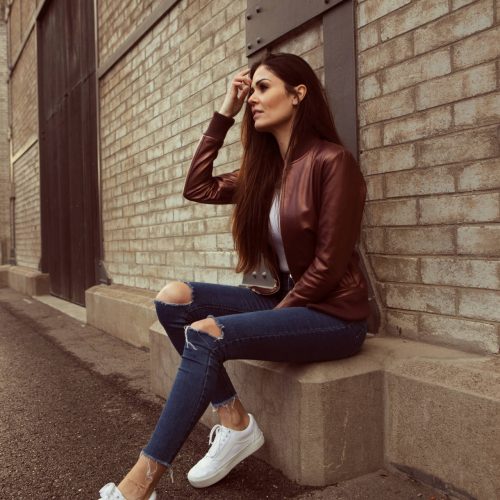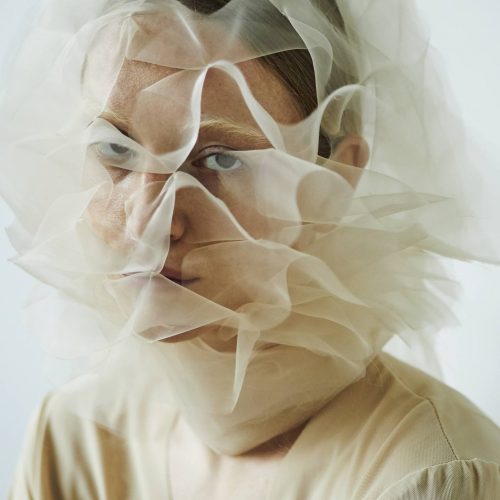Italian Emerging Voices | A Conversation With Nicola D’Alpaos
Genderless and eco-friendly, the brand DALPAOS is narrated by the words of its founder Nicola D'Alpaos. Always surrounded by the natural world, Nicola reveals us the DNA of his brand. It takes inspiration from Dolomite mountains, poisonous plants and horror movies of the 90s.
To receive the Luxiders newsletter, sign up here.
Detached from the latest fashion trends, DALPAOS follows its creative flow, with an almost completely surreal shade. Nicola D'Alpaos was born into a family of tradesmen and a peaceful valley with mountains behind and a lake downstream. His grandfather was a goldsmith, his mother used to work in the perfume business, and his father was a musician. Therefore, he believes that these influences have played a significant role in his personal growth and interest in luxury, crafts, and different forms of art.
D'Alpaos studied in the field of tourism and languages, before moving abroad and realizing that his passion for fashion could become a job. After a long apprenticeship, he collaborated with professionals and companies and learned the job right on the ground. Everything else was achieved by a high creative component and plenty of ideas. Additionally, to the DALPAOS project, he currently collaborates with other brands as a consultant, especially for startups with top-of-the-range targets from different parts of the world. He support them in the design and development of "made in Italy" and sustainable products. He also designs and create accessories (especially bags) for certain brands he work with on a seasonal basis.
A CONVERSATION WITH NICOLA D'ALPAOS
What is the DNA of the brand DALPAOS?
The brand takes inspiration from the place where I was born and raised, which is situated at the foot of the Dolomite chains, surrounded by nature and the same time, close to various cities, including Venice. Therefore, the brand focuses its DNA on the mountains, the extreme sports practiced here, the colors, the plants and the traditions. All of them it is revisited in a resolutely contemporary key, working on details (even those hidden) and concepts that evolve seasonally. I like to research classical details and bring them back to something close to streetwear and casual clothing. Since the first capsule, garments have been designed with sustainable and recycled fabrics, making targeted research on quality materials and giving them a new life. This notion has expanded and strengthened over time.
The brand logo is reminiscent of the shape of an origami heart, a symbol that wants to represent the craftsmanship, that is synonymous with what you can create with a simple sheet of paper, technique and creativity.
The F/W 2021-2022 collection, Optimist, highlighted the beneficial properties of some poisonous plants rather than the destructive ones. We like to think that, at the same time, DALPAOS is a brand that emphasizes the artistic and sustainable aspect of fashion rather than the disruptive one, about the pollution of the fashion industry on the environment. Is that a deliberate connection or a completely spontaneous one?
Plants represented in this collection are a source of inspiration because they can create a union between their aesthetics and danger, making them even more fascinating. It is partly the instinctive attraction we all feel for the forbidden things. The resulting link with the fashion industry is intentional, and I believe that there is no doubt that the road to sustainability must now, more than ever, travel hand in hand with everything else.
"I felt a great attachment to plants and uncontaminated places"
- Nicola states.
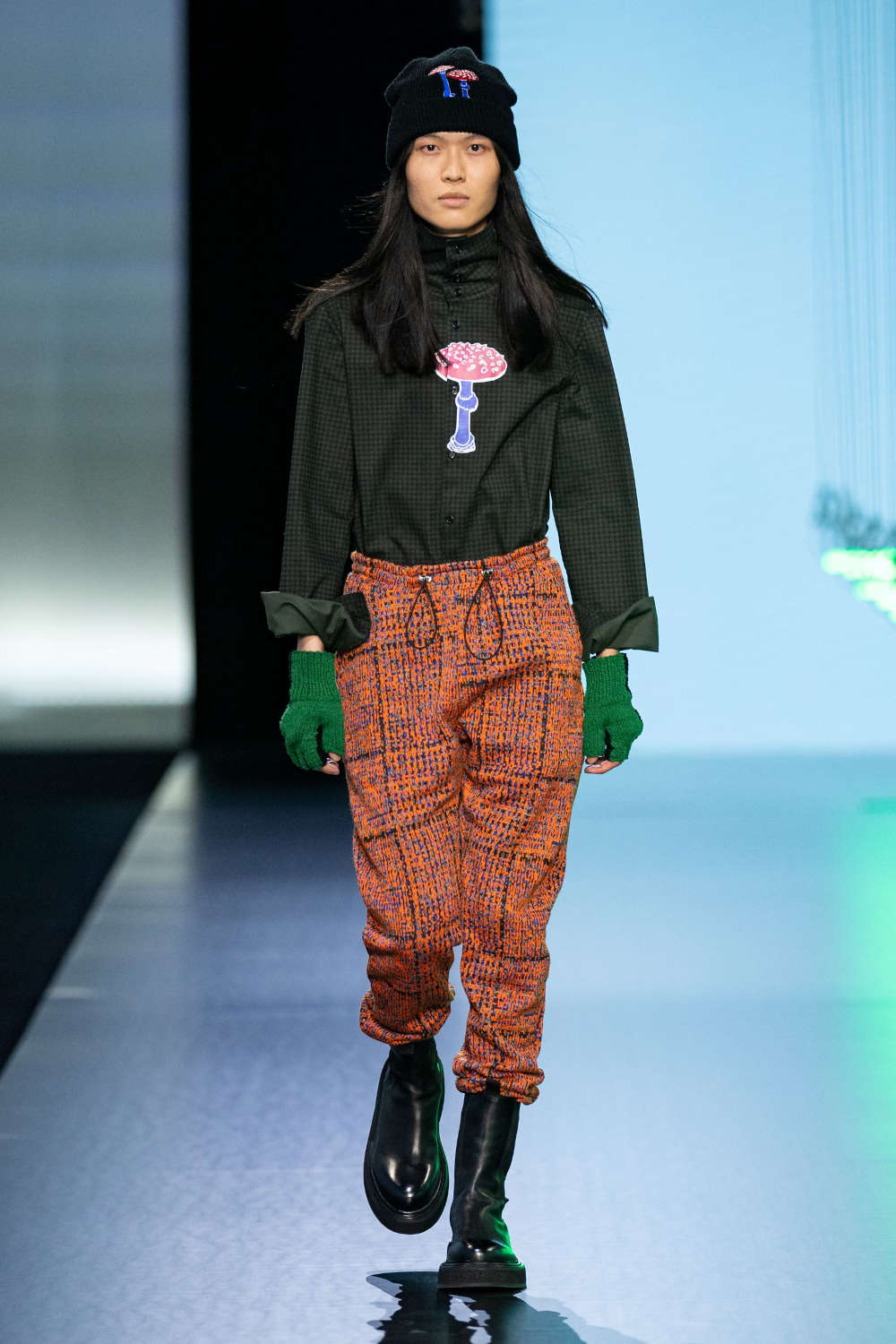
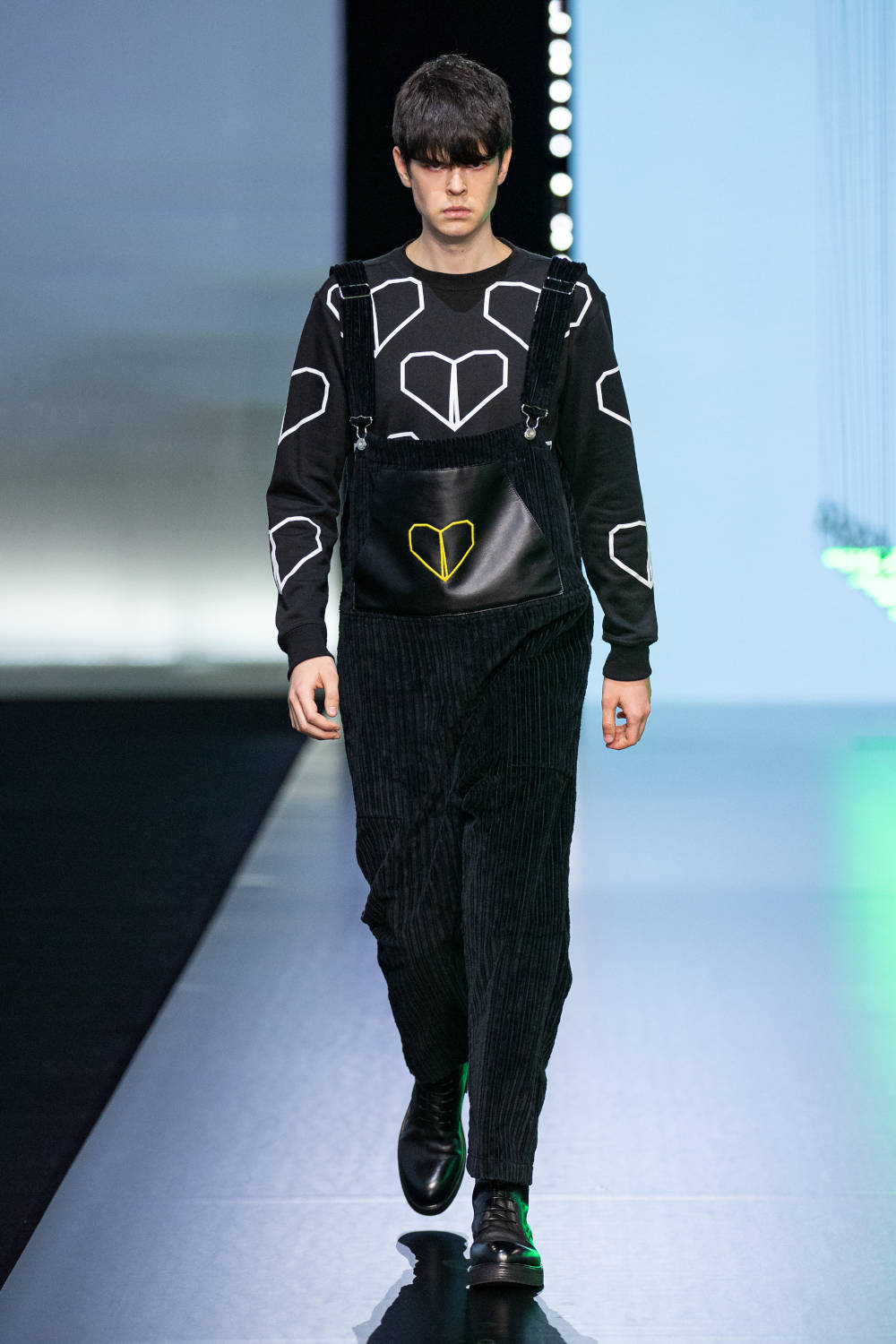
During Milan Fashion Week, you presented the same collection with DALPAOS WITCH PROJECT, a short film inspired by the horror movie "The Blair Witch Project" (1999) by Daniel Myrick and Eduardo Sánchez. Explain to us how the idea of presenting the collection in this way was born.
We were in the middle of a pandemic and we were designing the collection for the debut of DALPAOS at MFW, which would take place a few months after Who Is On Next. The situation was not clearly the best. It would be the first digital fashion week, where all the brands, from the big to the emerging ones, would present their digital show, in the forced absence of fashion events and runaways.
Considering the need to preserve the entire team from big movements and aggregations, we reasoned on different projects, focusing on our territory. The idea to draw from "The Blair Witch Project" was born from my passion for this movie genre, specifically, this movie terrified a whole generation and became a source of study for the particularity of its marketing. I immediately acknowledged the great creative potential behind this type of project. The location always reminded me of the beautiful forest of Cansiglio, very close to our headquarters. The people involved had to be few in number and with a story to tell. As so, we selected 3 actors through online casting, while we thought of dialogues and history development. The fascinating thing about the project was the possibility of having the actors film the whole thing directly and let them live day and night in the woods, even alone, in order to dive themselves into the concept of the story. Obviously, they followed the necessary guidelines such as the resumption of the garments and the path that led them into the house.
Natural elements are a constant feature in your collections, from the choice of the locations to the choice of the prints, fabrics and colors shades. How did your interest in the natural world develop?
During my teenage years, I began to feel my birthplace was limited and oppressive. After living in London for a long time, I realized how much I missed nature. Today, I find my balance here. I use the mountains as if they were stable points and certainties clearly visible from afar, but at the same time, I feel the need to move frequently and experience the big cities. I realized, only with time that I felt a great attachment to plants and uncontaminated places, especially when I did not have them at hand. It was certainly not the most comfortable choice; it leads to daily sacrifices. On the other hand, I love to change places constantly, so I reached the right compromise over time and when I come back, I feel like I am at home.
"I have never believed in gender uniforms and I think every brand has the opportunity to make a difference in this change"
- Nicola continues.
Besides the cinematic world, what are your other influences?
I love contemporary art and interior design. I am passionate about garden design, I love visiting parks as well as taking care of my garden, an activity that helps me to give light to new ideas and reason about the most important decisions. At the same time, I am both passionate about electronic music and clubbing, I read books, especially Noir and when I can I travel. When all these worlds collide is when the best ideas come to life.
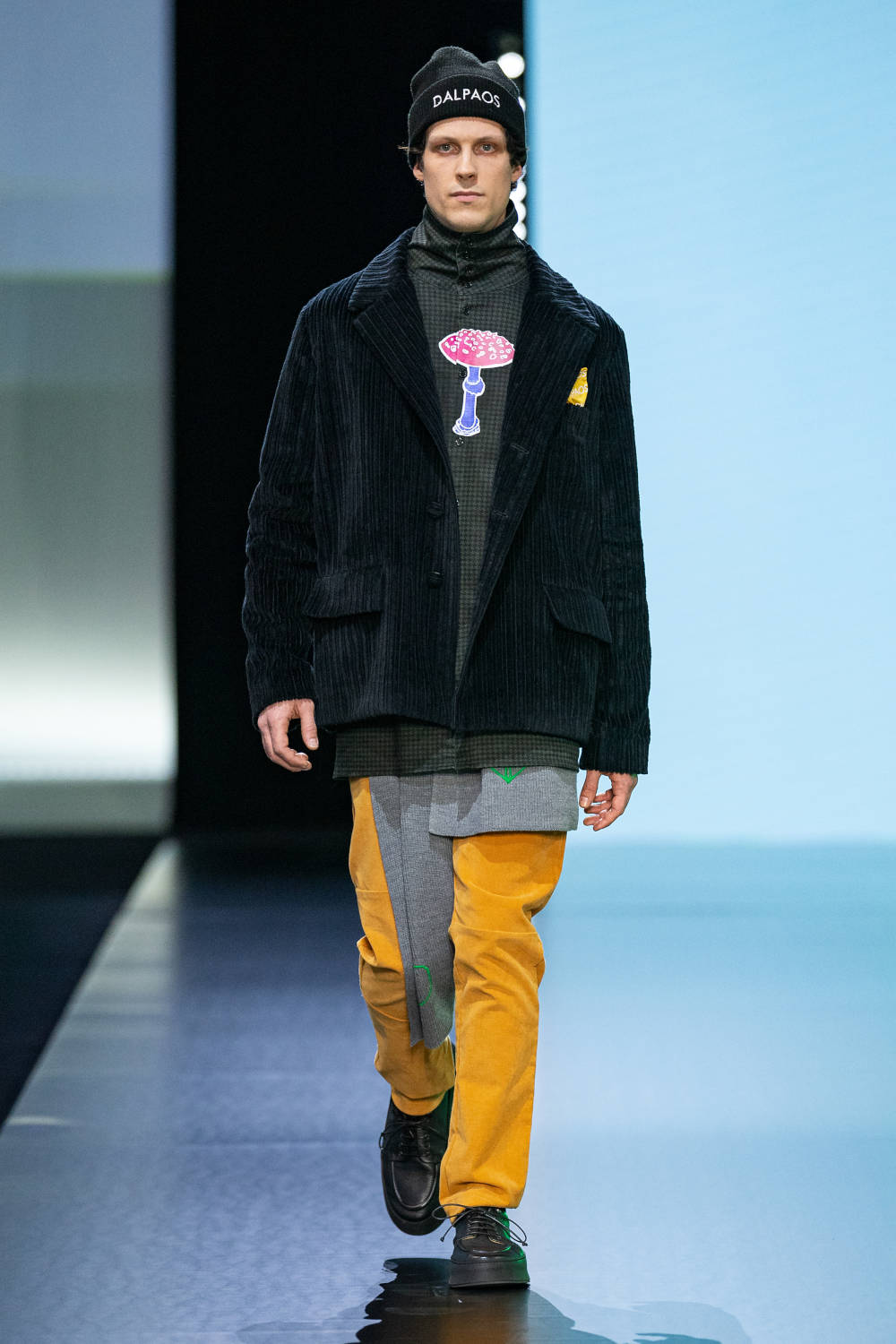
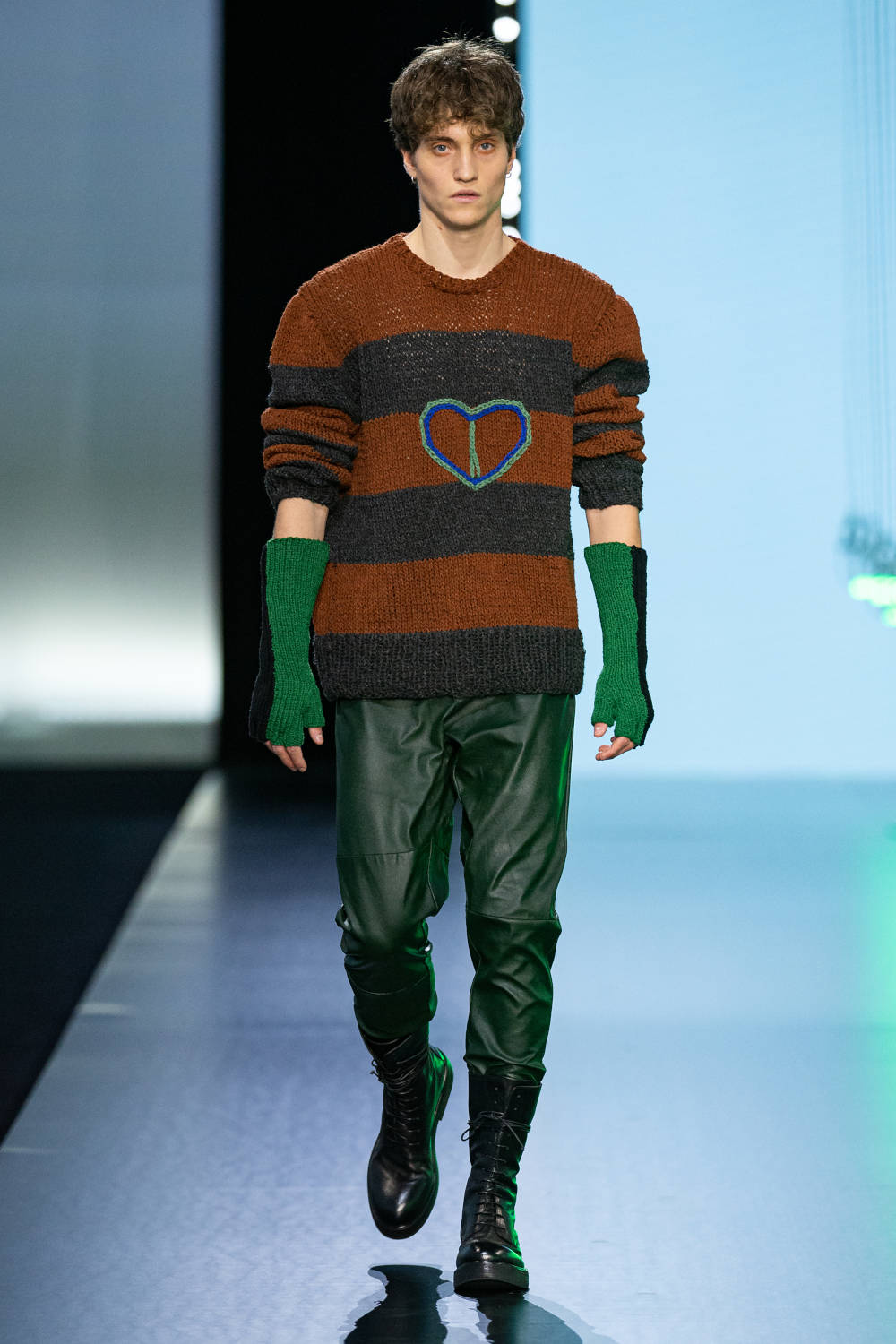
Tell us about your experience in being a finalist in the "Who is On Next" context, in 2020. Which lessons did you learn?
Who Is On Next represented a huge opportunity to take a very important step, that is obtaining the visibility and the support necessary to expose and present ourselves to an international audience. The involvement in this project has given us the tangible chance of gaining keys that open doors that were previously hidden or unknown to us. These are doors that offer you new paths to take if you are able to understand the right one.
What elements make DALPAOS a timeless and genderless brand?
Starting from the concept of nature and mountains, we can work on new topics, focusing on sustainability and creativity and combining streetwear and casual with a very personal touch. Every collection we develop contains, according to our point of view, the necessary for every situation. In this way, each garment is devoid of deadlines, dictated by fashion trends, and somehow keeps the aesthetics and the concept unchanging over time. We present menswear collections, but we conceive most of the garments as genderless, working on a wide development size. I have never believed in gender uniforms and I think every brand has the opportunity to make a difference in this change.
"We have always focused mostly on upcycled fabrics, concentrating on the use of high-quality materials that already exist."
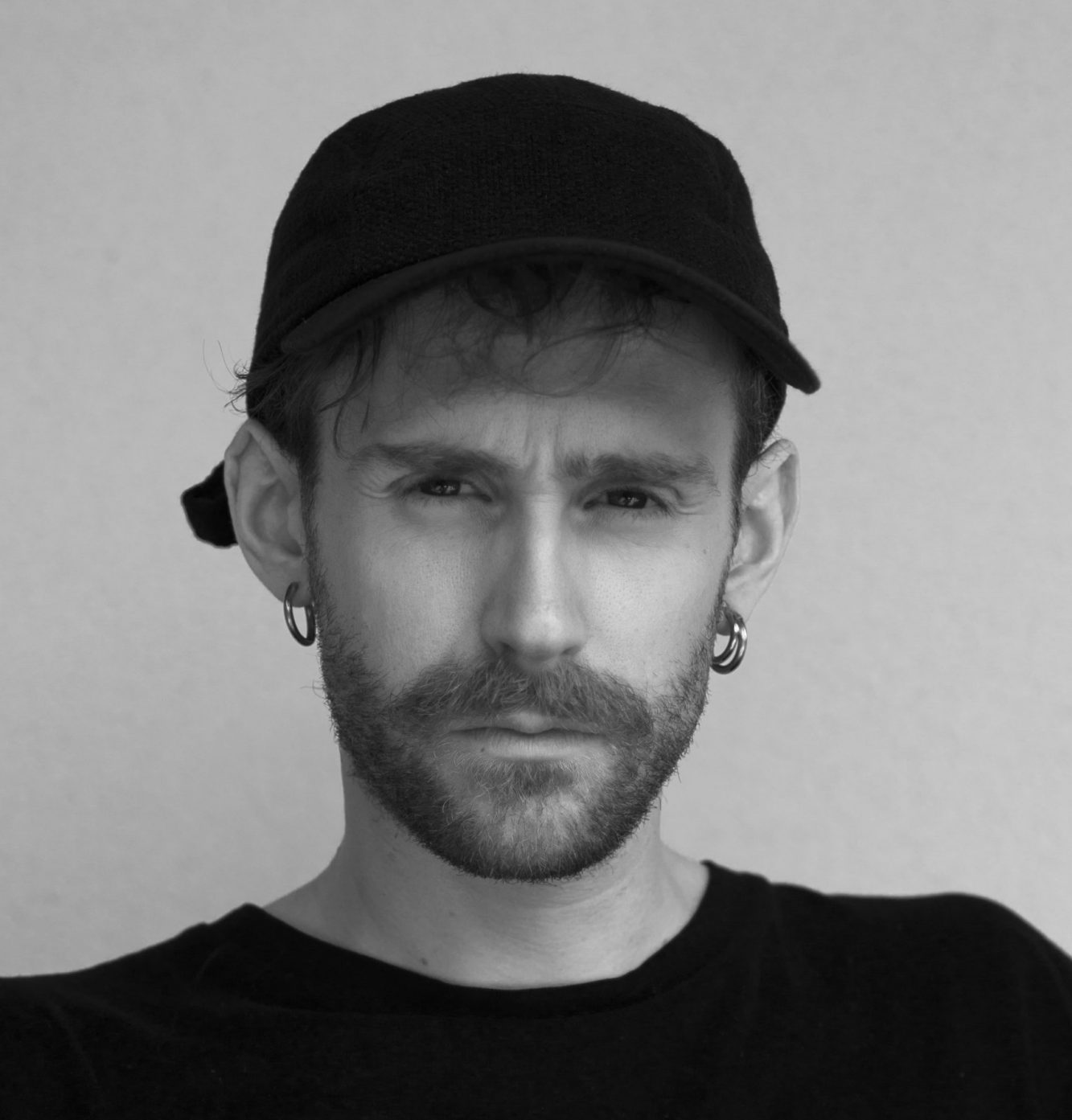
Nicola D'Alpaos
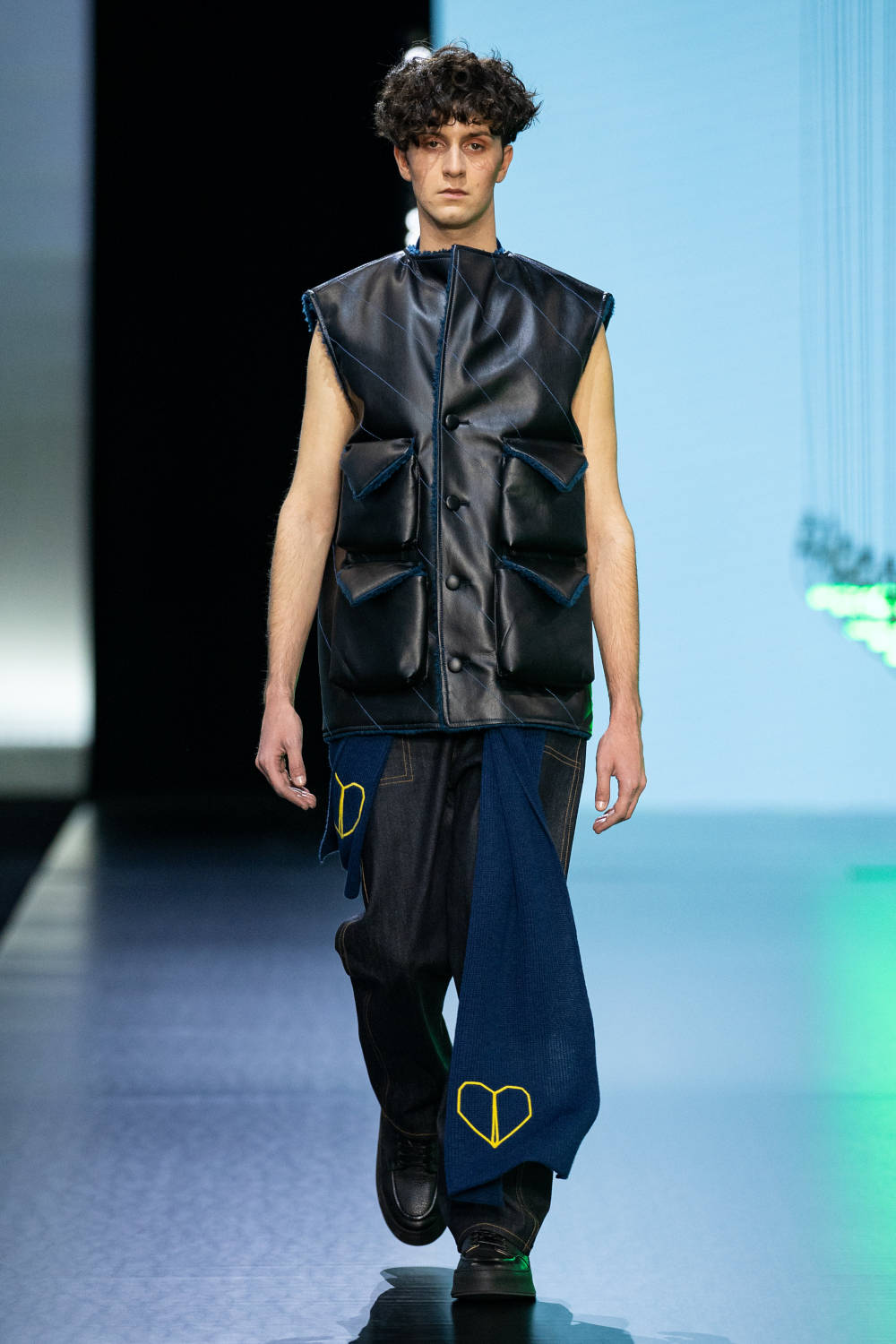
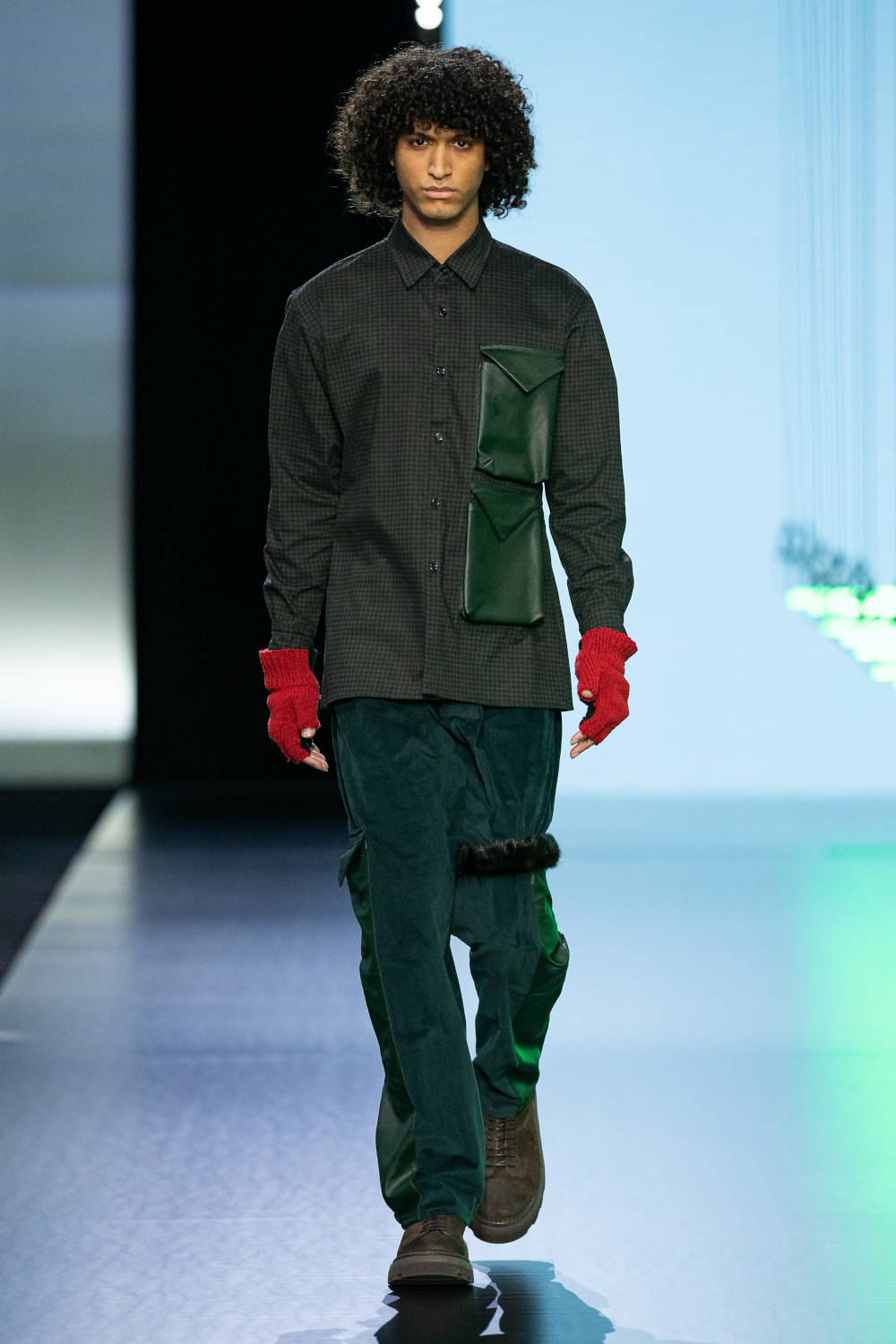
DALPAOS ETHICAL COMMITMENT
Do you think that being an ethical and sustainable brand in this historical period is difficult? Why is that?
In the last few years, the selection of materials has been simplified thanks to the research of many textile manufacturers, on ecological and sustainable fibers. With DALPAOS, we have always focused mostly on upcycled fabrics, concentrating on the use of high-quality materials that already exist; thus, partially bypassing the need to produce for our own needs. For example, the leather we use for making the accessories is always recycled and it comes from leftovers of the previous production. We always think about the concept of giving a second life to such noble materials. Another example of craftsmanship, as well as slow and conscious production, are the knitted gloves from the "Optimist" collection. Only the necessary has been produced, therefore avoiding the problem of waste. In this regard, a choice that we are testing is to produce, only to order, a selection of garments that can be purchased in our e-commerce. This also allows us to focus on any personal requirements of the customer, especially for the most articulated garments.
Where do you see yourself and your brand in 10 years? Which expectations do you have for the future in terms of ethical commitment?
I envision working with a lot of creative and interesting people from all over the world and to share ideas with them on a daily basis, in a big studio. I hope to continue to create free collections unleashing imagination and new concepts for both DALPAOS and others. I am curious to understand how fashion will connect even more with technology and look forward to always experimenting with the union of tradition and the future.
The ethical commitment will go hand in hand with the growth of the brand, by studying new ways to reduce the environmental impact in the production of each garment and accessory. We will work with ethical companies and study new options that are not yet existing but that will surely emerge given the great need to address a huge problem that perhaps we are still only aware of. I believe that creativity will lead us to find new ideas that will help the evolution of the industry as we know it today.
+ Words:
Eliana Casa
Luxiders Magazine

